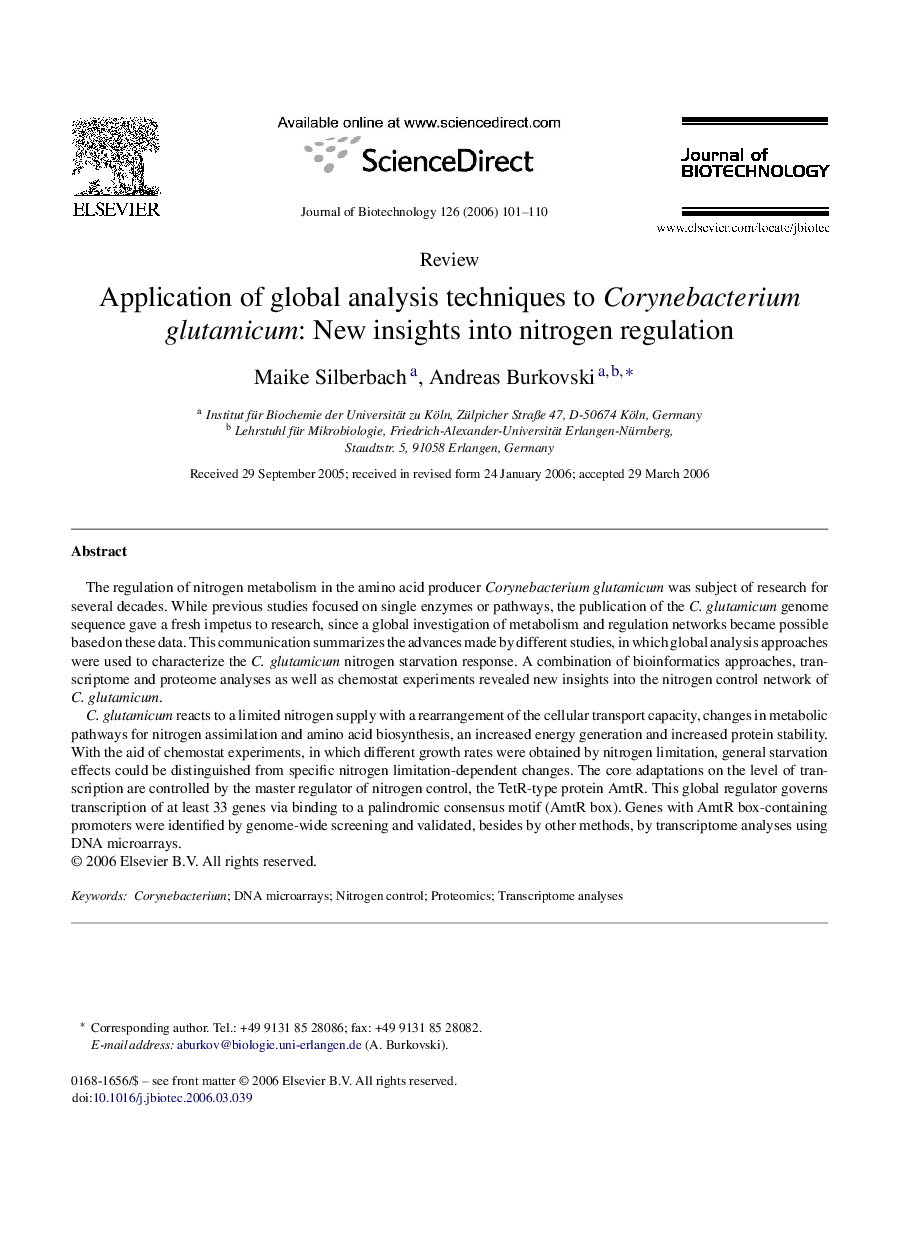| Article ID | Journal | Published Year | Pages | File Type |
|---|---|---|---|---|
| 25355 | Journal of Biotechnology | 2006 | 10 Pages |
The regulation of nitrogen metabolism in the amino acid producer Corynebacterium glutamicum was subject of research for several decades. While previous studies focused on single enzymes or pathways, the publication of the C. glutamicum genome sequence gave a fresh impetus to research, since a global investigation of metabolism and regulation networks became possible based on these data. This communication summarizes the advances made by different studies, in which global analysis approaches were used to characterize the C. glutamicum nitrogen starvation response. A combination of bioinformatics approaches, transcriptome and proteome analyses as well as chemostat experiments revealed new insights into the nitrogen control network of C. glutamicum.C. glutamicum reacts to a limited nitrogen supply with a rearrangement of the cellular transport capacity, changes in metabolic pathways for nitrogen assimilation and amino acid biosynthesis, an increased energy generation and increased protein stability. With the aid of chemostat experiments, in which different growth rates were obtained by nitrogen limitation, general starvation effects could be distinguished from specific nitrogen limitation-dependent changes. The core adaptations on the level of transcription are controlled by the master regulator of nitrogen control, the TetR-type protein AmtR. This global regulator governs transcription of at least 33 genes via binding to a palindromic consensus motif (AmtR box). Genes with AmtR box-containing promoters were identified by genome-wide screening and validated, besides by other methods, by transcriptome analyses using DNA microarrays.
